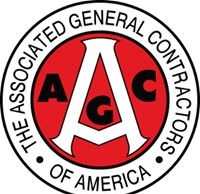The Changing Global Economy, Debt Capital Market Retrenchment, and Demographic Shifts Lead the New List of The CRE® 2016-17 Top Ten Issues Affecting Real Estate
CHICAGO – June 9, 2016 – (RealEstateRama) — The changing global economy, debt capital market retrenchment and widespread demographic shifts are expected to have the most significant impact on real estate in the near-and long-term, representing both risks and corresponding opportunities, according to The Counselors of Real Estate®, which today released its CRE® 2016-17 Top Ten Issues Affecting Real Estate. The list is developed annually.
The announcement was made by James S. (Jim) Lee, CRE, 2016 chair of The Counselors of Real Estate — the invitation-only professional association for the industry’s leading real estate advisors — during the opening address at the National Association of Real Estate Editors (NAREE) conference in New Orleans. Mr. Lee is co-founder and senior principal at Kensington Realty Advisors in Chicago, an SEC-registered real estate investment advisory firm.
The list was developed by members of the CRE External Affairs initiative, led by research executive and author Peter C. Burley, CRE, Chicago and Victor Calanog, Ph.D.,CRE, chief economist and senior vice president, Reis, New York City. The Counselors’ 1,100 members around the world undertake a collaborative dialogue on current issues and trends to identify the final list.
Mr. Lee noted that many of the issues are interconnected. Uncertainty within the global economy, tightening commercial and residential real estate credit and the vast numbers of both aging Baby Boomers and young Millennials simultaneously in the marketplace are current and trending issues that affect real estate executives and consumers alike across a variety of property sectors. The additional issues are: densification/urbanization, the political environment, housing affordability and credit constraints, the disappearing middle class, energy, the sharing/virtual economy and the rise of “experiential” retail. (Additional explanation is shown below and in the Issues and Trends section of the CRE website at www.cre.org).
The Counselors of Real Estate organization is known for thought leadership, extraordinary professional reach (more than 50 real estate specialties are represented by its member experts) and objective identification of the issues and trends most likely to impact real estate now and in the future. The issues in the annual Top Ten Issues Affecting Real Estate are an unbiased assessment of the most critical factors impacting real property.
The CRE 2016-17 Top Ten issues Affecting Real Estate
1. The Changing Global Economy
The IMF has revised GDP growth downward for much of the globe in 2016-17, as economic uncertainties continue and intensify. Currency issues, declining exports, and soft energy prices add to volatility (as reflected in the stock markets in early 2016 and Moody’s recent downgrade of Saudi Arabia). Political issues and conflict undermine stability as well.
Implications: There is potential for global economic deceleration. Weakened exports could lead to slower/smaller port and infrastructure investment, in particular, and broader softening of investment in real estate and other asset classes. The U.S. remains attractive to global capital and inflows are still strong, although they may be under pressure at their origin (China, Middle East, and Europe). A surge in Chinese buying of both residential and commercial real estate last year took their five-year investment total to more than $110bn, according to a study from the Asia Society and Rosen Consulting Group.
2. Debt Capital Market Retrenchment
Debt markets for commercial real estate are slowing sharply. Regulators are telling bank lenders to curtail CRE lending (that’s 50% of the debt market), and the CMBS markets are slowing down, with no legislative fixes to retention rules that are due to go into effect in the summer of 2016. Many insurance companies that traditionally invest in real estate are approaching their real estate allocation limits.
Implications: The search for permanent CRE debt capital will become more intense and competition for capital will become an issue in 2016 and 2017. The lending environment is likely to become more restrictive. This could present opportunities for some other, less regulated, lenders to enter the market.
3. Demographic Shifts
Millennials (generally considered to be people ages 18-35) have overtaken the Baby Boomers (people of ages 51-69) in sheer numbers, but both groups remain substantial real estate consumers. While the Boomers are retiring at a rate of approximately 10,000 per day, America’s population of persons aged 90-and-older has almost tripled since 1980, and is expected to increase to more than 7.6 million over the next 40 years, according to the U.S. Census Bureau. Older households and younger households are competing for housing in many of the same places. In terms of income, younger (Millennial) households are falling behind with many sons and daughters living at home with parents.
Implications: Multi-family development is still strong, with evolving amenities. There are opportunities in housing options for both groups. In the retail sector, more “experiential” shopping/dining/entertainment destinations will emerge, but buying power is lower due to income stagnation. Although Baby Boomers continue to prefer to age in place, there will be opportunities in services including medical, assisted living and memory care facilities. Look for a rise in renting over home ownership.
4. Densification/Urbanization
Transportation options, walkability, extensive work/live/play options continue to draw people of all ages into the urban core and to close-in “urbanized” areas. The move to higher density areas continues, as job growth and dynamic urban centers attract new residents and businesses.
Implications: There is a growing trend toward the development of high density mixed-use centers such as The Domain in Austin and the West Loop in Chicago that offer luxury living spaces, retail, work and entertainment spaces, parks, and gathering spaces. The emergence of “innovation centers” and “education centers,” which represent dynamic economies and cultural environments continues. There is pressure on suburbs to become more “urban.”
5. The Political Environment
The political environment has become acrimonious at all levels – global, national, state, local – and affects investment decisions (including business and household location decisions) with issues ranging from the perceived ability of governments to function to taxation to social issues. Social media makes it very easy to track the political and economic climate of any locale – and debate any political issue publicly.
Implications: The political and tax environment of every locale is now visible and information is immediate, creating heightened awareness that can influence where people choose to live, where businesses locate or expand and where tourists visit and spend. Locales that demonstrate political stability and investment in infrastructure, transit, schools, etc., may attract residents, visitors and businesses; those communities that project a negative environment will likely lose economic vitality over time.
6. Housing Affordability and Credit Constraints
New issues are beginning to emerge in the housing market, as affordability and credit constraints are challenging both the rental and home ownership markets. Stringent credit requirements prevent many households from entering the home ownership market, increasing demand for rental property. Limited available for-sale inventory and income stagnation are affecting affordability. Multifamily development continues but rents are outstripping incomes in many communities. With declining affordability, questions arise about where newly formed households will live, where the workforce will reside and whether affordable services will be available for aging Baby Boomers.
Implications: There will be continued strong demand for rental housing, but with a likely slowdown in rent growth. Micro apartments are helping to provide affordable alternatives for Millennials. Single family owner markets have room to improve, and builders are beginning to target “starter homes.” Competition for land in some areas is a supply constraint.
7. The Disappearing Middle Class
The wealth and income gap continues, with a number of measures showing stagnant or declining wages and wealth. A recent Pew Research study shows that the median income for middle-class households fell by nearly five percent between 2000 and 2014. Their median wealth (assets minus debt) declined by 28 percent after the housing market crisis and the subsequent recession. Costs have risen dramatically for many large-dollar items that affect middle class families, including college tuition and out-of-pocket costs under employer healthcare plans. Confidence in a comfortable retirement is wobbly, with concerns over rising costs and declining benefits in corporate retirement plans. To cover increasing costs and eroding asset wealth, an increasing percentage of households has moved from one-income to two-incomes. In 1960, 72 percent of two-parent families with children under 18 had a single earner (typically the father). That figure fell to 37 percent by 2010, while the number of two-earner families rose to 60 percent. At the same time, the Millennial generation is falling behind in assets and income (and many young people are coping with student loan debt).
Implications: Middle-market retailers (ie.g., Sears, Macy’s) have weakened and closed some retail outlets. The purchasing power divide drives new opportunities to serve diverse markets (i.e., Wal-Mart and Dollar General at the low end of the spectrum and luxury retailers such as Neiman Marcus and Tiffany at the other end). Stagnant or declining purchasing power affects where people can live as their housing choices diminish. There are opportunities in high-density multi-family and affordable housing. Luxury development continues to do well (malls, office, hotels, retail). But there is less opportunity in the middle. There will be a shift from home ownership to renting over time. A lack of home and business ownership–and such investment in communities–can easily lead to or contribute to growing social unrest.
8. Energy
Whenever a key commodity encounters instability, it can threaten global economic security. Energy markets are currently unstable. This year’s crash in oil prices has threatened the global economy–capital markets have responded–Saudi Arabian debt has been downgraded by Moody’s and, in some markets (such as Houston and North Dakota) lenders are restricting commercial real estate debt.
Implications: There has been a drastic change in U.S. oil production–rig counts in the U.S. are at their lowest level in 50 years. This affects regional employment and economies. Investors are reassessing plans. Alternative energy may become more attractive over time. High energy demand in China could change dynamics, but energy remains a highly volatile market.
9. The Sharing/Virtual Economy
As the effects of the recession only slowly fade, we are seeing the emergence of a “shadow economy” or “sharing economy.” New enterprises spring from economic uncertainties, such as Airbnb, Uber and bicycle sharing companies (e.g., Divvy). These have become alternatives to traditional lodging and transportation offerings – often operating outside of traditional regulations. They offer alternatives for employment as well. Crowdfunding has become an addition to traditional sources of capital for new enterprises and investment, including real estate.
Implications: Efforts to regulate some of these operators have seen mixed results, and the enterprises will likely continue to change the economic landscape while challenging the viability of some of their more traditional counterparts. New competitors and shifting demand will likely push weaker players out of the market (consider the falling prices of taxi medallions). Shared office spaces are rapidly becoming more widespread; “virtual” offices offer office amenities (receptionists, mailboxes, short term desk space) to small businesses. As is often the case in periods of dynamic change, many will become more widely accepted elements in the general economy.
10. The Rise of “Experiential” Retail
Traditional retail is reacting to change by adapting, with major retailers shuttering stores and downsizing their footprints, moving more to online options. As retailers retrench and rethink their retail models, large online retailers thrive. Amazon has replaced Wal-Mart as the biggest retailer in terms of dollars. This creates not only challenges but also opportunities.
Implications: “Destination” retail development is emerging. Malls are being reimagined as “experiential”– providing service options, “showroom” spaces (e.g., Tesla) while many actual purchases are being made online. Malls are redefining the concept of ‘anchor’ stores, with high-end food courts replacing department stores. “Mixed-use experiences”—such as a hotel/restaurant/sports (bowling) combination in addition to traditional stores—are growing. Watch for new retail ideas to attract consumers, including offering more local and regional shops and fewer large chains, in an effort to create more unique shopping experiences.
As we begin to see signs that we have reached the peak of one of the hottest retail investment markets in history, many owners are re-evaluating their portfolios to decide which properties they want to keep versus which to sell. Core properties located within major MSAs and/or high demographic areas have always been desirable, however, over the course of the real estate cycle, investors have moved to secondary or tertiary markets in search of significantly better yields, choosing credit tenancy over location.
On the Watch List:
The Counselors of Real Estate organization noted that close runners-up in development of The CRE Top Ten Issues Affecting Real Estate 2016-17 list included 21st Century Manufacturing & Industrial, Infrastructure, and “Unknown Unknowns” (such as terrorism and trade agreements) which are factors that could affect commercial and residential markets.
About The Counselors of Real Estate
The Counselors of Real Estate®, established in 1953, is an international group of high profile professionals including members of prominent real estate, financial, legal and accounting firms as well as leaders of government and academia who provide expert, objective advice on complex real property situations and land-related matters. Membership is selective, extended by invitation only. The organization’s CRE® (Counselor of Real Estate) credential is granted to all members in recognition of superior problem solving ability in various areas of real estate counseling. Only 1,100 people in the world hold the CRE credential.
For more information, contact Alice Muncaster, Director of Communications, The Counselors of Real Estate, 430 N. Michigan Avenue, Chicago, IL 60611; 312-329.8430; 773-966.9223 mobile;">, website: www.cre.org
















